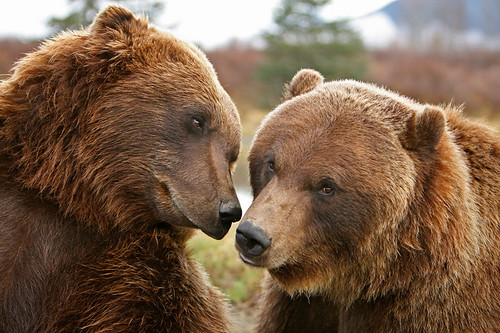I hadn't really done much gear research in those naïve days, so I hadn't realized that you can have a featherweight, failsafe stove for about $3 if you limit your cooking needs to "boil water"—i.e. no simmering, sauteing, etc. Very few long-distance hikers have the patience to do anything besides boil water anyway. So yesterday I made an alcohol stove, the variety that's called the Fancy Feast or the Super Cat stove because they're usually made from tins of cat food.
The concept is devastatingly simple, but I was still having trouble explaining it to my college buddy Jordan over the phone the other day. Jordan is a software engineer living in a Pacific Heights penthouse who is generally quick on the uptake, but even he had been so conditioned by the traditional idea of backpacking stoves (he was an Eagle Scout) that he couldn't understand what I was saying: "You pour denatured alcohol into an empty cat food tin, you light it on fire, you put your pot on top, you set up a windscreen, and 6-8 minutes later your water is boiling." Below is a brief photo record of my efforts in building this stove.
The materials: a tin of Fancy Feast cat food (the food itself is going to Little Jerry Seinfeld, one of my friend's cats, for his birthday tonight); denatured alcohol; a normal old hole-punch; paperclips; a pot; a pot-grip; and some dropper bottles for the alcohol. Aluminum foil should also be in the picture but isn't. Shades optional. First step is to punch 1 1/2 rows of holes around the cat food can.
Next step is, apparently, to slice both your thumb and forefinger open from the dangling chads of aluminum and spill blood all over your new stove.
The gist of the setup (minus the windscreen). I ended up punching more holes in the second row after my first test run, during which I got a hella slow boil time (11 minutes).
The aluminum-foil windscreen. I use one paperclip at the top to clip the ends together and keep the whole thing tight around the pot, about a half-inch off of it around the entire circumference. I use three or four paperclips on the bottom to stand it up a half-inch off the ground so that there's an inflow of air from below the stove to create a more efficient burn, but not so much air that it gets windy and moves the flame around. I've read that, without paperclips, you can use twigs to the same effect in the backcountry.
A lousy picture of the stove boiling water on our porch. You can see the blue flame in the bottom left, warning of the presence of Orcs. On my second trial run, I started with 2 cups of cold water from the faucet and put in about 1 fluid ounce of alcohol into the stove (turned out to be too much ... when this happens, you can't really turn off the stove, so the extra fuel just burns off). The outside air temperature was about 38 degrees. I lit the fuel with a match and got a rolling boil in 7 minutes, 20 seconds. Not bad for a cool night with cool water.
The entire kitchen setup, including pot, pot gripper, stove, matches, windscreen and fuel for 5-6 days, weighs 10oz. It won't malfunction—the potential problems lie in stepping on the tin, mis-rationing the fuel, or having it blow over full of flaming alcohol and start a wildfire (PCT thru-hikers have done all of these before). You can buy denatured alcohol, Everclear or HEET, which is some kind of antifreeze, in almost every trail town, and Yogi's guidebook makes it stupidly easy to ration fuel by saying, "Your next chance to buy alchy fuel is in X miles in X town." Basically, this is about as simple, cheap, light and convenient as you can possibly get regarding backpacking stoves. I no longer walk in fear of being able to boil water for my next meal.
p.s. For an example of an extremely well-thought-out variation on the simple alcohol stove, check out the Caldera Cone Keg-F system from Trail Designs. There is a certain amount of genius in what they've managed to come up with using a beer can and some aluminum sheeting. I wanted to buy one of these because the idea and the execution is so cool, but my girlfriend, ever with my best interests in mind, convinced me that it probably wasn't worth $60 (for comparison: including the pot, my setup cost $20).







